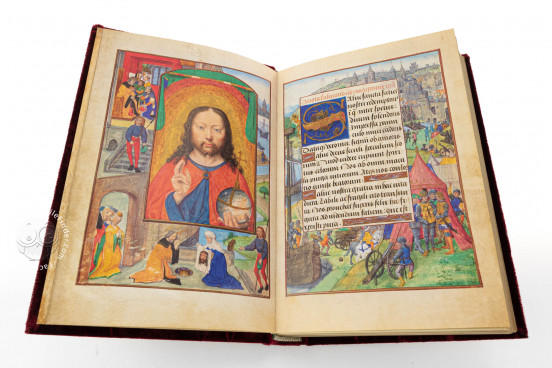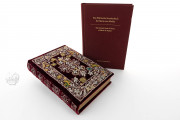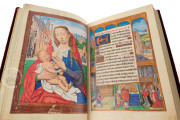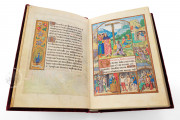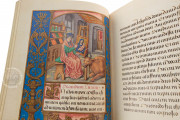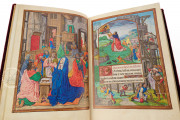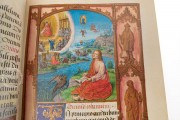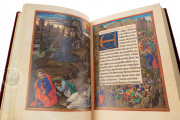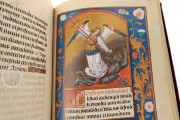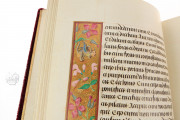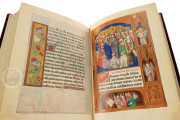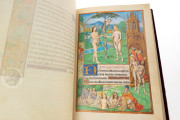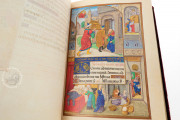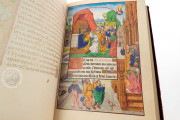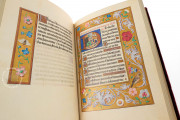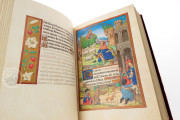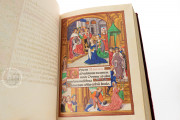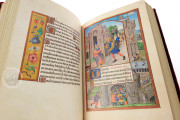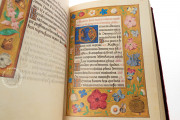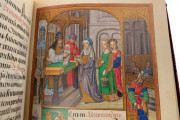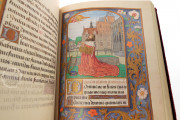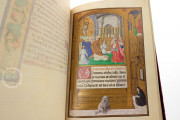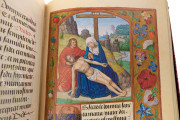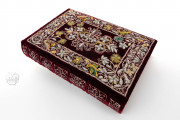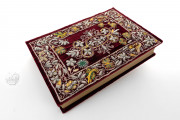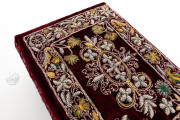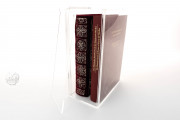Written and illuminated in the first quarter of 16th century the Flemish book of hours of Marie de Medici represents a beautiful example of the artistic perfection of Flemish art. The codex includes 3 full-size illuminations, 42 full-page miniatures, countless historiated or golden initials, and borders feature Flemish and Italianate flowers.
The Master of the David Scenes at the Apex of his Career
The Flemish book of hours of Marie de Medici was almost certainly commissioned by a wealthy woman from the area of Ghent or Bruges and produced between 1515 and 1520 by an anonymous artist known as the Master of the David Scenes in the Grimani Breviary, who is considered one of the greatest Flemish masters along with Gerard Horenbout and Simon Bening.
With the Flemish book of hours of Marie de Medici the David Master reached the apex of his career and artistic maturity creating one of the most elaborately ornamented works ever to come out of his studio. It is visible in all miniatures that the illuminator took great pleasure in telling and depicting stories.
Another outstanding feature of his art is his love for architecture: details of the city streets and squares are faithfully rendered, permitting us to see inside late Gothic churches, studios, and private chambers.
The Ghent-Bruges School and the Three-Dimensional Technique
The Ghent-Bruges School, at a time when the printed book had already celebrated its victory over the handwritten manuscript, managed to remain one of the leading centers of manuscript illumination, for the last-flowering of manuscript illustration began expanding throughout Europe.
Among the many features of the school the perfect mastery over the depiction of spatial perspective is worth of notice transforming two-dimensional book pages into three-dimensional spaces.
This mastery is strictly related to the development of Dutch realism, in which the illuminators – despite the small format of their works – showcased the skills of panel painting. Finally, the innovative type of border, strewn with flowers and insects – according to the trompe l’oeil technique – was further developed allowing for new creativity.
Ownership of the Flemish Book of Hours of Marie de Medici
This book of hours owes its current name to one of the later owners, the French queen, Marie de Medici (1573-1642), widow of the popular King Henri IV. Having to leave France in 1631, at the behest of her son, Louis XIII, she went into exile in Brussels, where she may have acquired the enchanting illuminated manuscript, before finally moving to Cologne where she died in 1642.
It is worth of notice an inscription in English on the inside page of the front cover stating that she left the book of hours in Cologne where an English manuscript collector, Francis Douce, may have acquired the book. Ultimately, the Flemish book of hours of Marie de Medici was donated to the world-famous Bodleian Library in Oxford in 1834.
Gothica Bastarda
The script of the Flemish book of hours of Marie de Medici exhibits a beautiful example of Gothica Bastarda, also known as lettre bâtarde, typical of France and the Low Countries. Despite being styled from the cursive script, it became a formal bookhand in its own right, and it features a contrast between thin and thick strokes.
The codex presents a velvet binding, with decorations in silk and silver.
We have 1 facsimile edition of the manuscript "Flemish Book of Hours of Marie de Medici": Flämische Stundenbuch der Maria von Medici facsimile edition, published by Quaternio Verlag Luzern, 2011
Request Info / Price
